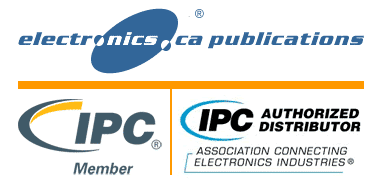2014 was a tough year for most EMS companies with revenues in Western Europe declining by 3% while an increase of 3.4% in Central and Eastern Europe (CEE) and Middle East/North Africa (MENA) helped the overall European market post growth of 0.5%. Although the market is expected to recover, growth is forecast to remain flat in 2015/2016 before gaining some traction in the later part of the forecast period.
EMS revenues in Western Europe are forecast to reach Euro 11.16 billion in 2019, up from Euro 10.37 million in 2014, with the market increasingly focused on the Aerospace, Defence, Automotive, Medical, Control & Instrumentation, Industrial and Telecom (ADAMCIT) segments of the market.
The transfer of production to manufacturing facilities in CEE/MENA to reduce costs and the increasing demand by OEMs for EMS to offer local manufacturing in key global markets will dampen growth in Western Europe during the period to 2019.
The reverse applies to CEE/MENA where growth will be boosted by the transfer of production from Western Europe and in particular, lower volume high mix products in the ADAMCIT segments. This is expected to be offset in part by the migration of higher volume products in the consumer, computing and communications, or 3C, segment to Asia as the major global EMS companies come under increasing pricing pressure. Assuming that the leading global EMS providers remain committed to retaining a major manufacturing presence in the region revenues are forecast to reach Euro 16.21 billion by 2019, up from Euro 15.15 billion in 2014
Major EMS Players
Although made up of over 1,000 companies, the industry is dominated by a small number of Global players with the Top 3 – Foxconn, Flextronics and Jabil – accounting for around 44.5% of revenues in 2014, with nearly 90% from plants in CEE focused on the 3C segment.
Approaching 75% of the total sales (Euro 19.1 billion) are achieved by the leading 50 companies or 5% of the total number. We are expecting that there will be further consolidation across the industry due to the downward price pressure, slow economic growth and requirement to broaden and deepen the design, development and aftercare services to customers.
This comprehensive report provides:
- A detailed market analysis to 2019 for Western Europe, CEE and North Africa in a single report.
- A breakdown of the market by major sector.
- An in-depth analysis and comment on the key market trends impacting the European EMS Industry.
- A ranking and detailed profiles of the Top 20 EMS providers in Europe.
- An overview of electronic production and EMS manufacturing in the major countries and regions including a ranking of the leading companies and profiles of the major players.
- A directory by country of the EMS manufacturing locations with addresses, contact numbers, websites.
An appendix with the estimated sales turnover for 2014 of the Top 50 European EMS providers and the Top 50 European EMS companies based on global revenues and a list of the prevailing and historical currency exchange rates.
The European EMS Industry report allows you to track these developments in a single cost-effective study providing both detailed market and company analysis. The eleventh edition of the European EMS industry report, published by Reed Electronics Research, highlights the issues impacting the European EMS industry.
Details of the new report, table of contents and ordering information can be found on Electronics.ca Publications’ web site: The European EMS Industry – A Strategic Study of the European EMS Industry 2014-2019.
European EMS Market Analysis




 Did you know there is an IPC standard associated with nearly every step of printed circuit board production and assembly? From design and purchasing to assembly and acceptance, Electronics.ca Publications offers IPC Standards to help you assure superior quality, reliability and consistency in the electronic assemblies that go into your product.
Did you know there is an IPC standard associated with nearly every step of printed circuit board production and assembly? From design and purchasing to assembly and acceptance, Electronics.ca Publications offers IPC Standards to help you assure superior quality, reliability and consistency in the electronic assemblies that go into your product. 






